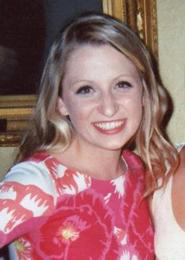
One of the most common methods of combating the influenza virus is to utilize an inhibitor to prevent the binding of the viral protein neuraminidase with cell surface receptors terminating in a sialic acid moiety. While this may sound like a complex process, it’s actually relatively simple to understand once the scientific jargon has been translated. In order for a virus like influenza to continue its life cycle, its neuraminidase enzyme needs to bind to and cleave a sialic acid molecule away from the human cell receptors.
Binding inhibitors send a drug to the site of this binding to block the natural substrate and prevent the viral life cycle from continuing. Previous research on neuraminidase binding has used the Brownian dynamics (BD) modeling process, and while BD is a time efficient method, it relies upon a number of approximations which makes it less accurate for close range modeling.
Leah Krause ’14 and Robert Clayton ’15 hope to improve upon this method of studying neuraminidase by focusing on the kinetics of ligand-protein interaction. Whereas most computational and experimental techniques focus on the tightness of each bind. The two chemistry majors, who recently presented posters at the MERCURY conference, conducted their research under the direction of Assistant Professor of Chemistry Adam Van Wynsberghe. They are one of only two groups of researchers in the world currently using a combination of BD and molecular dynamics (MD) in neuraminidase binding research.
The primary focus of Krause and Clayton’s research was the creation of a computer model to examine the relevant kinetics of the binding process. The two used a variety of computer programming and scripting languages, including Bash and Tcl, to create models that took into account a number of different starting positions, orientations and spatial distributions for the binds. Krause noted that “coding can be tedious, but it’s nice to know that there is always a way to make it work if you think about the problem long enough. That’s not always true in a ‘wet’ research lab.” Their program improves upon current modeling methods by combining the time efficiency of BD simulations and the accuracy of MD simulations.
After perfecting their computer models and running a number of simulations, the two researchers found that ligand starting positions and orientations heavily influenced the results of simulations on neuraminidase-sialic interaction. The two explained their findings by observing that “by the time ligands have reached the BD-MD transition surface, they have effectively determined if they will stick and where they will do so.” While this knowledge does not contradict previous findings, it does shed new light on the binding process.
In creating a neuraminidase binding model that is both more accurate and more comprehensive, Krause and Clayton have contributed to the field of influenza research in a way that may help future researchers to more effectively develop small molecule inhibitors for newly discovered strains of the virus.
Because the influenza virus is known to develop new strains at a fast rate, the ability to quickly and effectively prepare an influenza inhibitor is essential in treating and controlling outbreaks of influenza strands like avian and swine flu.
Krause is a graduate of Providence Academy (Minn.) and Clayton is a graduate of Algonquin Regional High School
Posted August 29, 2012
